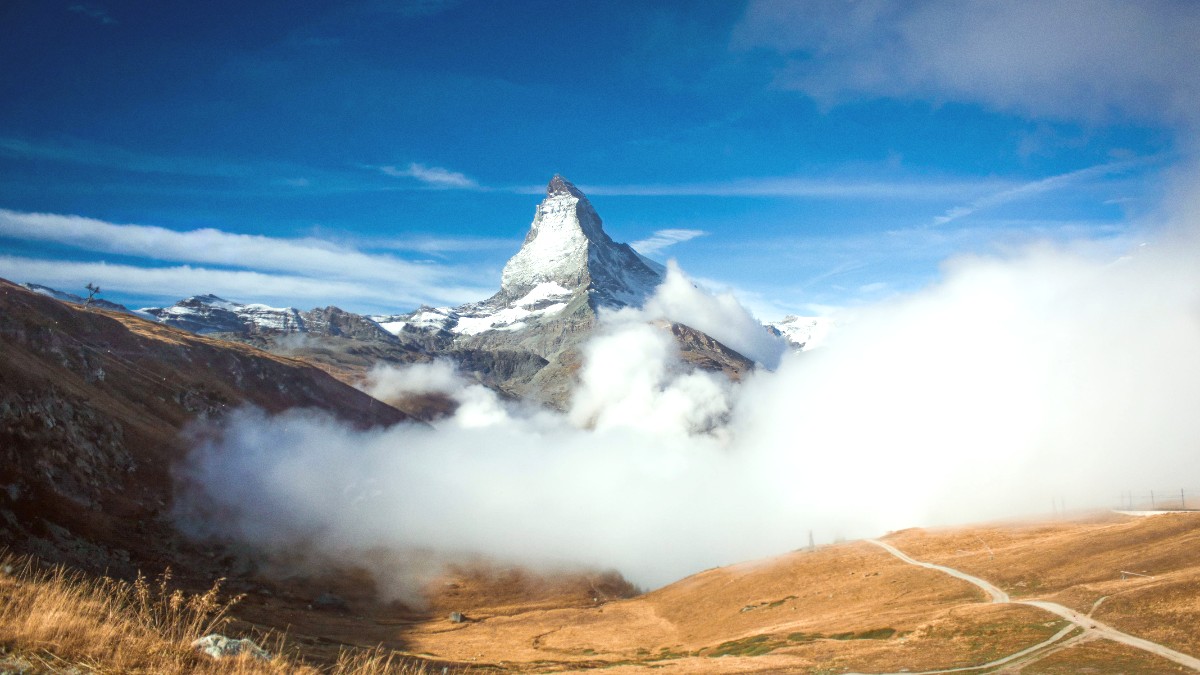
Valais, Switzerland
This guide provides practical advice for planning a visit to Zermatt.
Zermatt presents a distinct alpine experience. It maintains its car-free status, requiring visitors to arrive by train from Täsch. The village uses electric taxis and horse-drawn carriages for transport.
The village blends natural beauty and modern amenities, all against a backdrop of imposing peaks.
Zermatt sits in the southern Swiss canton of Valais, at an elevation of 1,620 meters (5,315 feet) above sea level. The village lies at the end of the Mattertal, a valley surrounded by some of Switzerland's highest peaks. The most famous of these is the Matterhorn, rising to 4,478 meters (14,692 feet).
This unique position means Zermatt is cradled by a horseshoe of mountains, many over 4,000 meters, including the Monte Rosa massif, Switzerland's highest point. Glaciers, alpine meadows, and dense forests define the surrounding landscape, providing a diverse environment for outdoor pursuits throughout the year. The village itself occupies a relatively flat section of the valley floor, with the Vispa River flowing through its center. Its location in the Valais region means it sits in a predominantly German-speaking area of Switzerland, though French is also spoken in the wider canton.
Zermatt’s history is closely tied to agriculture and mountaineering. For centuries, it was a remote farming village.
Its transformation began in the mid-19th century with the rise of alpinism. The Matterhorn became a magnet for climbers.
Edward Whymper's first ascent in 1865, though ending in tragedy, brought international fame to Zermatt.
This event marked the start of modern tourism. Hotels, guesthouses, and mountain guides emerged to cater to visitors.
The construction of the Gornergrat railway in 1898 cemented Zermatt's status as a premier alpine destination.
Over the decades, Zermatt developed its infrastructure while maintaining its car-free policy, preserving its mountain village character.
The old village section, with its traditional wooden barns and houses, shows this past.
Zermatt today honors its mountaineering heritage, while adapting to modern tourism needs.
Zermatt honors its mountaineering heritage while adapting to modern tourism needs.
Zermatt provides a distinct alpine experience. It maintains its car-free status, requiring visitors to arrive by train from Täsch. The village uses electric taxis and horse-drawn carriages for transport.
The village offers a blend of natural beauty and modern amenities, all against a backdrop of imposing peaks.
Valais Canton, Swiss Alps. 1,620 meters (5,315 feet).
Swiss Franc (CHF). Swiss German, High German, English, French.
Matterhorn views, outdoor sports, high-quality tourism infrastructure.
The Matterhorn, visible from many points.